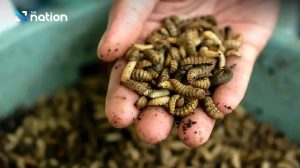A stage exists that starts with the smallest wonders of life. Live black soldier fly larvae (BSFL) start as minuscule eggs, each no bigger than a grain of sand. Adult flies produce their eggs within dark and wet areas. The eggs of black soldier fly larvae transform into active larvae through the process, which takes four days to complete.

Larvae Life: A Feast of Growth
The newly hatched larvae need to perform only one task, which is eating. During a two- to three-week period, these creatures consume organic waste with great hunger. BSFL larvae consume every piece of leftover fruit or vegetable waste without preference for ordinary materials. The growth phase is fundamental because almost all weight gain occurs during this time. The creatures demonstrate fast growth by converting waste material into beneficial protein.
The Pupal Stage: Transformation Time
The larvae conclude their eating period by starting the pupal transformation. During this period the larvae experience a stage comparable to human teenage development, which involves considerable change. The pupal development occurs after they settle in a dry area, transforming into pupae before metamorphosis begins. The transformation period extends for two weeks during this phase. During this phase the metamorphosis occurs under the protective layers of their bodies without any noticeable activity.
Emergence as Flies: Ready for Action
Finally, the grand reveal! Black soldier flies transition into adults following their time in the pupal development period. Black soldier flies represent an unusual category different from typical household flying insects. The short-lived existence of black soldier flies extends to seven days, but they avoid causing any harm through stings or bites. Their main goal? Black soldier flies complete their life cycle when they reproduce to continue the cycle.
Nutritional Harvest
People who want to use BSFL as pet food need to consider the precise moment of harvest. The nutritional value of larvae reaches its peak point directly before they metamorphose into pupae. After scooping the larvae from their container, you can rinse them before using them to feed your pets. These insects contain high protein content combined with fats, which makes them appropriate feed for dogs and cats when portioned correctly.
Happy feeding!